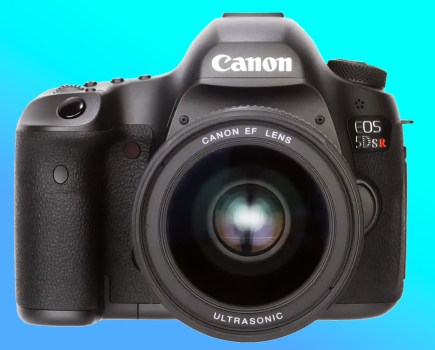Do megapixels matter in photography? Rod Lawton looks at why this is not necessarily the case anymore, despite photographers’ continuing fixation on megapixels.
Will we ever be able to stop talking about megapixels and start talking about photography? Probably not. And yet this fixation with megapixels will often distract us from things that actually matter and sometimes lead us into buying things we don’t need.
Megapixels used to be very important, when compact cameras had 4MP (if you were lucky), DSLRs had 6MP and digital imaging was still its infancy. You could make a big A4/letter size print at home and still see the pixels, or at least the point where the resolution ran out.
I’ve still got my old Nikon D50 with its 6MP sensor. That’s when megapixels were actually very important indeed.
But by the time we got to 12MP, this was far less of a problem, and let’s not forget that we’re now in an age of digital image consumption where we look at images on a screen, not in a print. A 12MP camera can produce horizontal images roughly equivalent to 4K in width, so a 12MP image will completely fill the full width of a 4K monitor or TV without magnification.
So have our resolution needs actually diminished? At what point is enough, well, enough?
Megapixels vs sensor size
Numbers sell like nothing else, whether it’s in marketing brainstorming sessions, ad campaigns, camera stores, or social media quarrels.
Megapixels have remained a marketing mainstay long after they ceased to be the most important measure of camera quality. They are used especially creatively by smartphone makers selling phones with 48MP or 108MP sensors, for example, that are ‘pixel-binned’ down to 12MP for regular use. The new Samsung S23 Ultra has a 200MP sensor, pixel-binning the output down to 50MP or 12.5MP, depending on the settings.
Pixel binning is grouping the output from a bunch of photosites into one pixel in order to get a usable level of dynamic range and noise control.
Some smartphones can be used at their full 48+MP advertised resolution in the right circumstances (bright light) but the noise control and dynamic range are the first things to suffer. It does at least mean you can get phones that shoot 8K video even though regular stills are 12MP, but you really wouldn’t want to shoot stills at the ‘full’ resolution.
The fact is that sensor size and megapixels go together. More megapixels only truly deliver on their promise with a bigger sensor. No device today has too few megapixels, but there are plenty with sensors that are just too small for good quality.
Megapixels and video don’t mix
Too many megapixels can be a bad thing for video because makers have to figure out what to do with the extra pixels. It is an issue.
A 24MP sensor, for example, will have a horizontal resolution of around 6,000 pixels, but if you want to capture 4K UHD video (3840 pixels) the camera either has to crop the image to a smaller frame size, ‘oversample’ the full sensor data and handle a much larger processing overhead, or use ‘line skipping’ or ‘pixel binning’. Some cameras do two or more of these depending on your selected frame rate or compression settings.
The Sony A7 IV has 30MP, which is great for stills, but means it has to oversample full-width 4K video and use crop mode for 60fps capture.
The best hybrid cameras, of course, can shoot 6K or 8K video that matches the sensor resolution, but that produces massive video files that are difficult to store and edit and almost certainly larger than you will need.
There is a large mismatch between current mirrorless camera sensor resolutions and common video resolutions. This is why ‘native 4K’ cameras like the 12MP Sony A7S III work so well for video.
Where next for megapixels?
Of course, 12MP is old hat. Today, 24MP is the new baseline, 30MP is better and many photographers aspire to 40-60MP cameras for their outright resolving power.
But then how many times can you actually use that kind of resolution? For giant exhibition prints, perhaps, or especially demanding commercial clients… or is it just for pixel peeping?
This 4K Benq monitor is probably the highest resolution digital device any of us will use for image consumption any time soon, and it only needs a 12MP image to fill its full width. An iPad is closer to 6MP.
We are perhaps moving into a post-resolution age, where our consumption is shifting from print to digital and we don’t need the megapixels we once did. We might want them, but we don’t need them.
We all want more detail, but are we running out of ways to use it?
The views expressed in this column are not necessarily those of Amateur Photographer magazine or Kelsey Media Limited. If you have an opinion you’d like to share on this topic, or any other photography related subject, email: ap.ed@kelsey.co.uk.
Related articles:
- How much resolution do you actually NEED?
- Opinion: You don’t need the best camera to take good photos
- What is pixel binning? Smartphone sensor technology explained
- Will AI replace photographers?







